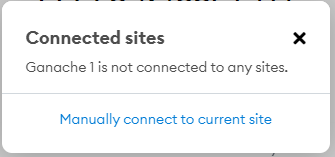So I’ve been following a new website, 1729.com. I love this site because they keep exposing me to new technologies and new ideas. The most recent one I read was a post about Voluntary Government.
https://1729.com/voluntary-governments#task
Well, I wanted to start by saying that I loved the idea. I have been fundamentally a libertarian (small “l”) for a long time. Ever since I heard the concept, it resonated with me. I just want to be left alone… 🙂 But anyway, back to point. This article discusses the rise of new technologies and how these constantly disrupt business, no matter how big the the business is. (old school example, Kodak ruled the camera world… until they refused to jump on board the digital camera movement… because it would put their film out of business… uh oh. You get the idea).
The problem is that government seems to be immune to these rapidly evolving systems, and instead leaves us in the same predicament, year after year, we are forced to vote for the lesser of two evils… or “we are just throwing our vote away”. Personally, I swing back and forth between throwing my vote away and not voting anyway. My belief is why would I vote for someone that is just another crook, that is been in the system for decades…
The article continues on to talk about the system I just mentioned, and how engrained everything is, so it is nearly impossible to make changes. Sadly, totally agree with this. The post does give us some possible hope for the future. The idea is that with the idea of virtual reality, it would be possible to try out different forms of government without changing the current form. The concept is that radically changing the government of a large nation could be devastating. It’s one thing to try out try out a film camera and a digital camera side by side, but you can very well have a Libertarian government, a Republican and a Democratic lead system all at the same time.
As much as I want to believe in the idea of a VR political experiment, I’m afraid that it just would not ever be conclusive enough to change any one’s mind about the system. The reason I don’t think it could ever work, is how could really simulate our world in VR. There are so many variables out there, good and bad. For example, how do you really know what would happen if a new political policy of legalizing cocaine were enacted. How could you predict (accurately) how criminals would respond, how would average citizens respond. would a new form of illegal activity pop up in it’s place? would violence go down? would it be helpful for harmful to currently impoverished areas? Until we could get to a full blown simulation (like the Matrix), I don’t think you could ever really understand the impacts of a decision, much the far reaching impacts of multiple different policy changes. They may seem unrelated, but eventually, all policies begin to intersect… the problem is that you can’t always predict where and what will happen when they do. Something as helpful as giving money to everyone seems like a great idea until you start to see small businesses die because they can’t afford to hire people and pay more than the “free money” being mailed every month.
My counter proposal would be to set up real world experiments. Setup actual cities in the world with different sets of governing rules. Let people opt in, or opt out as they see fit. In an ideal world, you could setup enough of these cities so that you could change 1 variable at a time. More police, less police, legalize drugs, make everything illegal (including alcohol). It would be relatively easy to see how many people come in vs. leave the city. You could compare crime, revenue, taxes, etc. Clearly, if most people leave within the first 6 months, it’s not a good model 🙂 You would also be able judge who benefits from the model. For example, if minorities flock to the new city, but big business won’t come there, you have another data point.
My belief is that you won’t be able to see the “real” world consequences (or benefits) in VR. I believe the representation of who participated would be skewed, and the effects of policy changes could not be captured in a VR world. I would like to see small cities become experiments. These cities would need to be completely exempt from Federal and State laws. They would need to be allowed to set their own policies (within reason) without the oversite of any other governing body. This would give you real world experience of what happens when you lower the drinking age, raise the speed limit, make all schools private, raise taxes, lower taxes, required public service by all adults over the age of 25, term limits on all public officials, eliminate property taxes, let individuals fund their own public works projects (roads, utilites, etc.) in exchange for lower or no taxes. The possibilities are endless, and I believe that if you give people a taste of freedom, they will begin to demand it.
If possible, take it to the next level and let a state like Vermont act as it’s own “country”. they already have the free state country, let them take things to the next level. You get the idea.
I feel like this is all wishful thinking, as those in power will fight like hell to keep that power (and continue taking more), and experiments like this would quickly expose how little we need those people and their antiquated ideas.
Anyway, thanks for reading,






